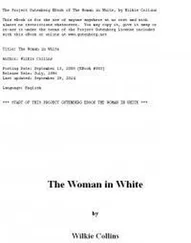Уилки Коллинз - Rambles Beyond Railways; or, Notes in Cornwall taken A-foot
Здесь есть возможность читать онлайн «Уилки Коллинз - Rambles Beyond Railways; or, Notes in Cornwall taken A-foot» весь текст электронной книги совершенно бесплатно (целиком полную версию без сокращений). В некоторых случаях можно слушать аудио, скачать через торрент в формате fb2 и присутствует краткое содержание. Год выпуска: 2009, Жанр: Классическая проза, на английском языке. Описание произведения, (предисловие) а так же отзывы посетителей доступны на портале библиотеки ЛибКат.
- Название:Rambles Beyond Railways; or, Notes in Cornwall taken A-foot
- Автор:
- Жанр:
- Год:2009
- ISBN:нет данных
- Рейтинг книги:4 / 5. Голосов: 1
-
Избранное:Добавить в избранное
- Отзывы:
-
Ваша оценка:
- 80
- 1
- 2
- 3
- 4
- 5
Rambles Beyond Railways; or, Notes in Cornwall taken A-foot: краткое содержание, описание и аннотация
Предлагаем к чтению аннотацию, описание, краткое содержание или предисловие (зависит от того, что написал сам автор книги «Rambles Beyond Railways; or, Notes in Cornwall taken A-foot»). Если вы не нашли необходимую информацию о книге — напишите в комментариях, мы постараемся отыскать её.
Rambles Beyond Railways; or, Notes in Cornwall taken A-foot — читать онлайн бесплатно полную книгу (весь текст) целиком
Ниже представлен текст книги, разбитый по страницам. Система сохранения места последней прочитанной страницы, позволяет с удобством читать онлайн бесплатно книгу «Rambles Beyond Railways; or, Notes in Cornwall taken A-foot», без необходимости каждый раз заново искать на чём Вы остановились. Поставьте закладку, и сможете в любой момент перейти на страницу, на которой закончили чтение.
Интервал:
Закладка:
But it is not from such a village tragedy as this; it is not from its retired situation, its Arcadian peacefulness, its embowering trees and hidden hermit-like beauties of natural scenery, that the vale of Mawgan derives its peculiar interest. It possesses an additional attraction, stronger than any of these, to fix our attention—it is the scene of a romance which we may still study, of a mystery which is of our own time. Even to this little hidden nook, even to this quiet bower of Nature's building, that vigilant and indestructible Papal religion, which defies alike hidden conspiracy and open persecution, has stretched its stealthy and far-spreading influence. Even in this remote corner of the remote west of England, among the homely cottages of a few Cornish peasants, the imperial Christianity of Rome has set up its sanctuary in triumph—a sanctuary not thrown open to dazzle and awe the beholder, but veiled in deep mystery behind gates that only open, like the fatal gates of the grave, to receive, but never to dismiss again to the world without.
It is this attribute of the vale of Mawgan which leads the stranger away from the cool, clear stream, and the pleasant, shadowy recesses among the trees, to an ancient building near the church, which he knows to have been once an old English manorial hall—to be now a convent of Carmelite nuns.
The House of Lanhearne, so it is named, comprises an ancient and a modern portion; the first dating back before the time of the Conquest, the second added probably not more than a century and a half ago. The place formerly belonged to the old Cornish family of the Arundels; but about the year 1700, their race became extinct, and the property passed into the possession of the present Lord Arundel. However, although the manor-house has changed masters, there is one peculiar circumstance connected with it, which has remained unaltered down to the present time—it has never had a Protestant owner.
Thus, whatever religious traditions are connected with it, are Roman Catholic traditions. A secret recess remains in the wall of the old house, where a priest was hidden from his pursuers, during the reign of Elizabeth, for eighteen months; the place being only large enough to allow a man to stand upright in it. The skull of another priest who was burnt at the same period, is also preserved with jealous care, as one of the important relics of the ancient history of Lanhearne.
About the commencement of this century, the manor-house entirely changed its character. It was at that time given to the Carmelite nuns, who now inhabit it, by Lord Arundel. The sisterhood was originally settled in France, and was removed thence to Antwerp, at the outbreak of the first French Revolution. Shortly afterwards, when the affairs of the Continent began to assume a threatening and troubled aspect, the nuns again migrated, and sought in England, at Lanhearne House, the last asylum which they still occupy.
The strictness of their order is preserved with a severity of discipline which is probably without parallel anywhere else in Europe. It is on our free English ground, in one of our simplest and prettiest English villages, that the austerities of a Carmelite convent are now most resolutely practised, and the seclusion of a Carmelite convent most vigilantly preserved, by the nuns of Mawgan! They are at present twenty in number: two of them are Frenchwomen, the rest are all English. They are of every age, from the very young to the very old. The eldest of the sisterhood has long passed the ordinary limits of human life—she has attained ninety-five years.
The nuns never leave the convent, and no one even sees them in it. Women even are not admitted to visit them: the domestic servants, who have been employed in the house for years, have never seen their faces, have never heard them speak. It is only in cases of severe and dangerous illness, when their own skill and their own medicines do not avail them, that they admit, from sheer necessity, the only stranger who ever approaches them—the doctor; and on these occasions, whenever it is possible, the face of the patient is concealed from the medical man.
The nuns occupy the modern part of the house, which is entirely built off, inside, from the ancient. Their only place for exercise is a garden of two acres, enclosed by lofty walls, and surrounded by trees. Their food and other necessaries are conveyed to them through a turning door; all personal communition with the servants' offices being carried on through the medium of lay sisters. The nuns have a private way, known only to themselves, to the chapel choir, which is constructed in the form of a gallery, boarded in at the sides and concealed by a curtain and close grating in front. The chapel itself is in the old part of the house, and occupies what was formerly the servants' hall. The officiating priest who undertakes the duties here, lives in this portion of the building, and leads a life of complete solitude, until he is relieved by a successor. He never sees the face of one of the nuns; he cannot even ask one of his own profession to dine with him, without first of all obtaining (by letter) the express permission of the Abbess; and when his visitor is at length admitted, it is impossible to gain for him—let him be who he may—the additional indulgence of being allowed to sleep in the house. [5] RAMBLES BEYOND RAILWAYS. LAMORNA COVE. RAMBLES BEYOND RAILWAYS; OR, Notes in Cornwall taken A-Foot. By WILKIE COLLINS, AUTHOR OF "ANTONINA," "THE WOMAN IN WHITE," ETC. The Land's End, Cornwall. NEW EDITION. LONDON: RICHARD BENTLEY: NEW BURLINGTON STREET. Publisher in Ordinary to Her Majesty. 1861. DEDICATED TO THE COMPANION OF MY WALK THROUGH CORNWALL, HENRY C. BRANDLING.
The chapel is the only part of the whole interior of the building to which strangers can be admitted: those who desire to do so can attend mass there on Sundays. The casual visitor, when permitted to enter it, is not allowed to pass beyond the pillars which support the gallery of the choir above him; for if he advanced farther, the nuns who might then be occupying it, might see him while they were engaged at their devotions. The chapel exhibits nothing in the way of ornament, beyond the altar furniture and a few copies from pictures on sacred subjects by the old masters. Some of the more valuable objects devoted to its service are not shown. These consist of the sacred vestments and the sacramental plate, which are said to be of extraordinary beauty and value, and are preserved in the keeping of the Abbess. The worth of one of the jewelled chalices alone has been estimated at a thousand pounds.
Much of the land in the neighbourhood belongs to the convent, which has been enriched by many valuable gifts. The nuns make a good use of their wealth. Neither the austerities and mortifications to which their lives are devoted, nor their rigid and terrible self-exclusion from all intercourse with their fellow-beings in the world around them, have diminished their sympathy for affliction, or their readiness in ministering to the wants of the poor. Any assistance of any kind that they can render, is always at the service of those who require it, without distinction of rank or religion. No wandering beggar who rings at the convent bell, ever leaves the door without a penny and a piece of bread to help him on his way.
But the charities of the nuns of Mawgan do not stop short at the first good work of succouring the afflicted; they extend also to a generous sympathy for those human weaknesses of impatience and irresolution in others, which they have surmounted, but not forgotten themselves. Rather more than twelve years since, a young girl of eighteen applied to be admitted to share the dreary life-in-death existence of the Carmelite sisterhood. She was received for her year of probation: it expired, and she still held firmly to her first determination. But the nuns, in pity to her youth, and perhaps mournfully remembering, even in their life-long seclusion of mind and body, how strong are the ties which bind together the beings of this world and the things of this world, gave her more time yet to search her own motives, to look back on what she was abandoning, to look forward on what she desired to obtain. Mercifully refusing to grant her her own wishes, they forebore the performance of the fatal ceremony which irrevocably took her from earth to give her up only to Heaven, until she had undergone an additional year of probation. This last solemn period of delay which Christian charity and sisterly love had piously granted, expired, and found her still determined to adhere to her resolution. She took the veil; and the dreary gates of Lanhearne have closed on all that is mortal of her for ever!
Читать дальшеИнтервал:
Закладка:
Похожие книги на «Rambles Beyond Railways; or, Notes in Cornwall taken A-foot»
Представляем Вашему вниманию похожие книги на «Rambles Beyond Railways; or, Notes in Cornwall taken A-foot» списком для выбора. Мы отобрали схожую по названию и смыслу литературу в надежде предоставить читателям больше вариантов отыскать новые, интересные, ещё непрочитанные произведения.
Обсуждение, отзывы о книге «Rambles Beyond Railways; or, Notes in Cornwall taken A-foot» и просто собственные мнения читателей. Оставьте ваши комментарии, напишите, что Вы думаете о произведении, его смысле или главных героях. Укажите что конкретно понравилось, а что нет, и почему Вы так считаете.








